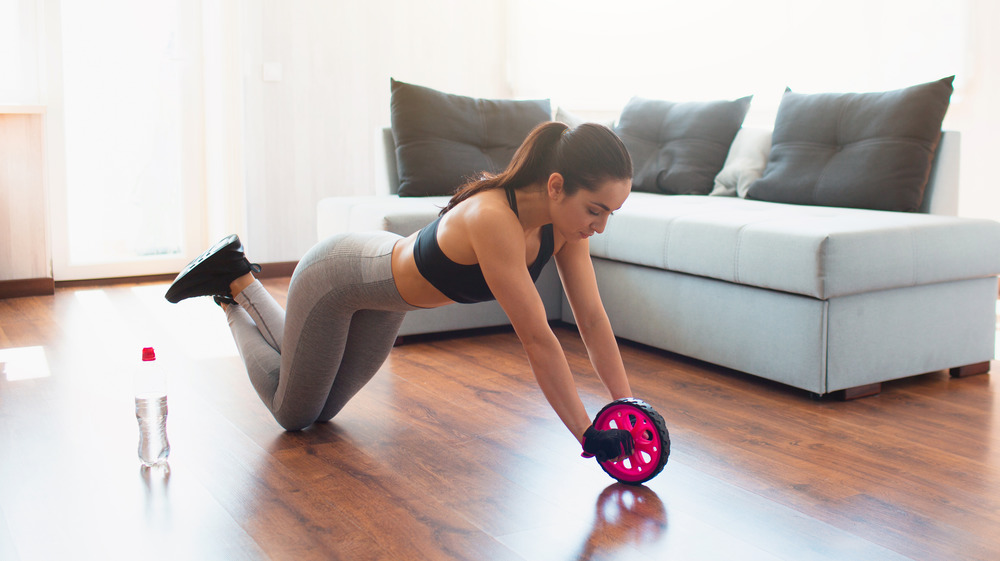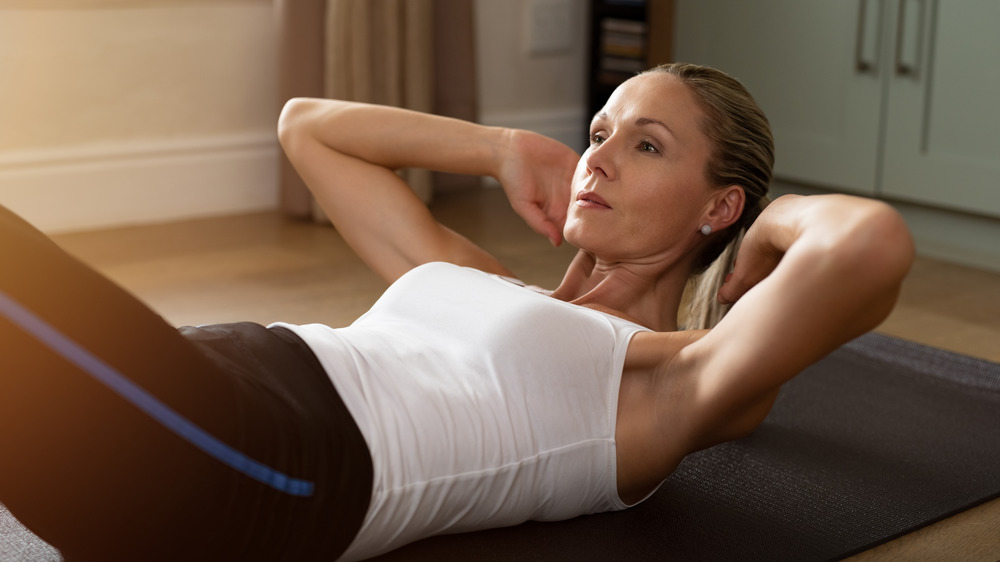Fact Or Fiction: Does 'Spot Reduction' Really Work For Weight Loss?
Spot reduction is a hotly debated topic in the weight loss and fitness industry. While it sounds like a dream come true — choosing which part of your body sheds fat as you drop weight — the way that weight loss works is more complicated than that.
Also known as targeted weight loss, the desire to lose fat in certain areas, from the upper arms to the belly to the inner thighs, is a common one. The spot reduction technique is the idea that you can work the muscles in those specific areas in order to lose fat. But weight loss doesn't work like that, so most people using tools like an ab-crunching machine end up disappointed (via Healthline).
You might "feel the burn" when you pile on crunch after crunch in an effort to get rid of a "muffin top," ACE Fitness explains — but that burn is likely extremely ineffective at actually shedding pounds, since the muscles at work are quite small and quick to fatigue. Rather, a program that combines elements of cardio and full-body strength training will be more effective for overall weight loss.
Why does the spot reduction myth remain?
All of that said, there is some truth to spot reduction, but it's not what you think. It's more about muscle growth and toning than fat loss. For example, certain muscle groups can improve overall posture, making you look slimmer and more toned. "Strength training the muscles of the upper body —especially the shoulders and back — will improve your posture and change your body's proportions. This will make your waistline appear smaller," personal trainer Lecia Whitlock told WebMD.
As you lose weight, if you're focusing on a specific body part when strength training — like abs, glutes, legs, or arms — you'll be developing and defining the muscles there, so as you begin to shed fat, those muscles may become more prominent (via ACE Fitness). This is why someone who has a low body-fat percentage may still not have a six-pack: Having those toned muscles on display requires building the muscles as well as losing the fat. And for some, that simply might not be in their genetic makeup — it's important to respect your body type and focus on being fit and healthy, not hitting a certain set of proportions (via Verywell Fit).


